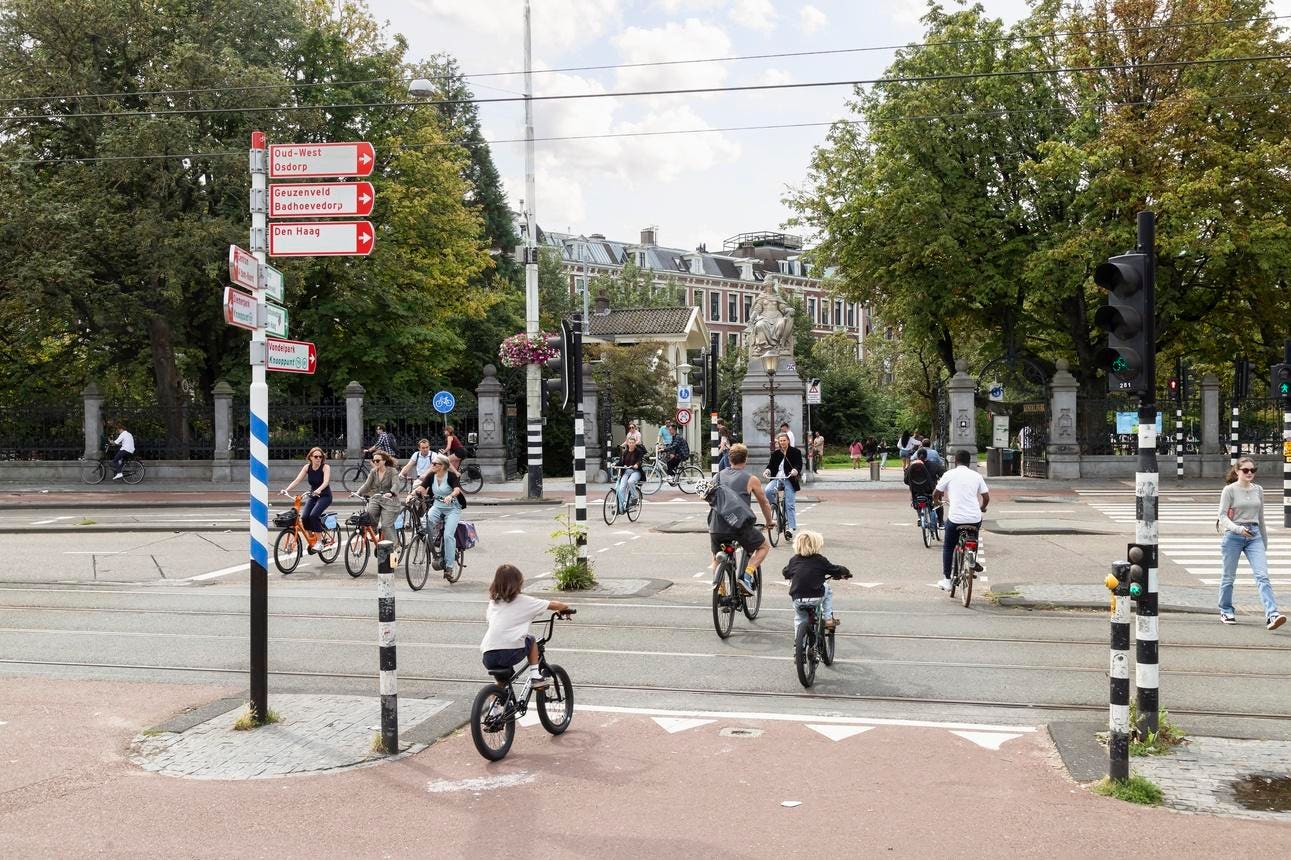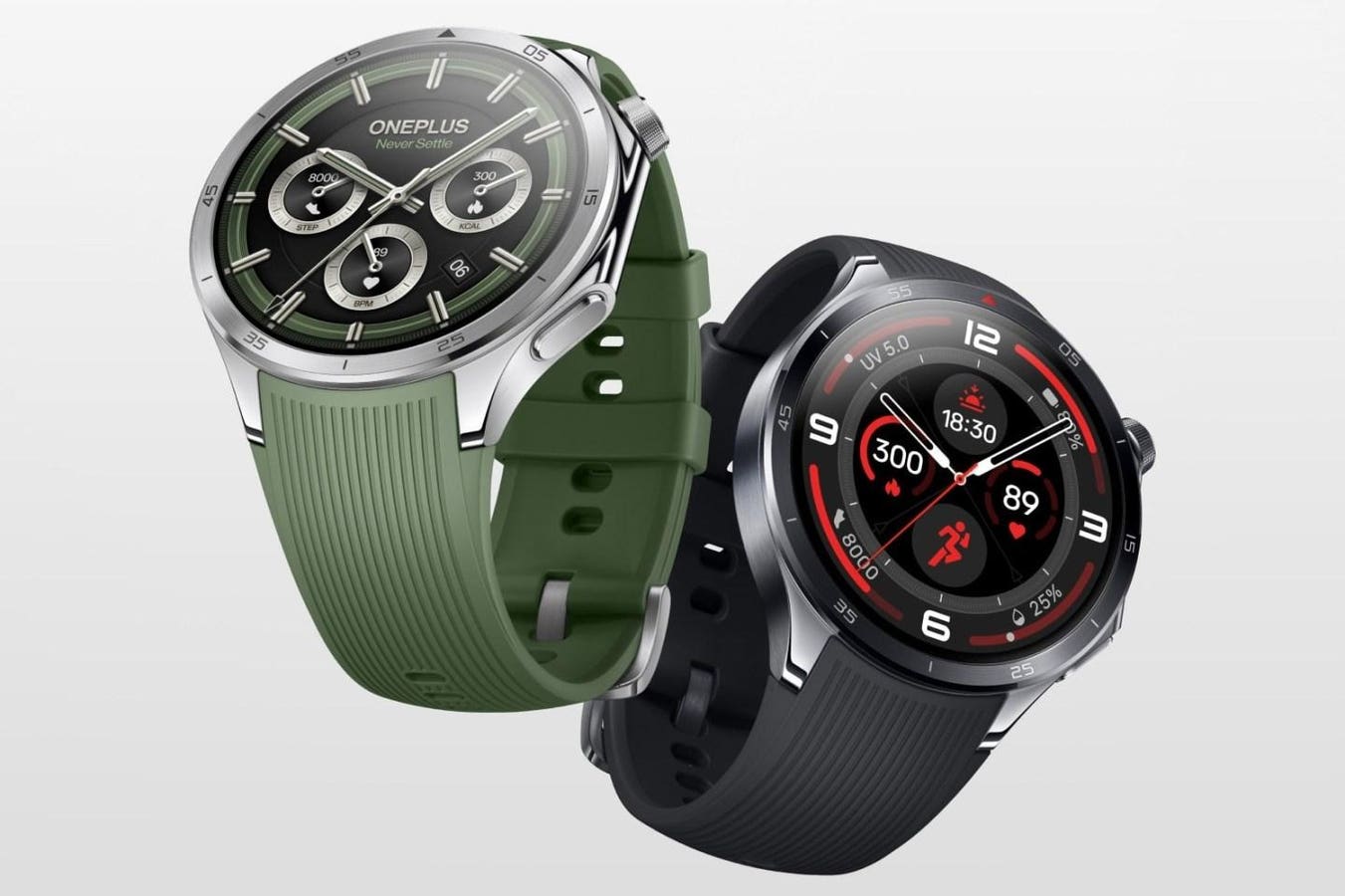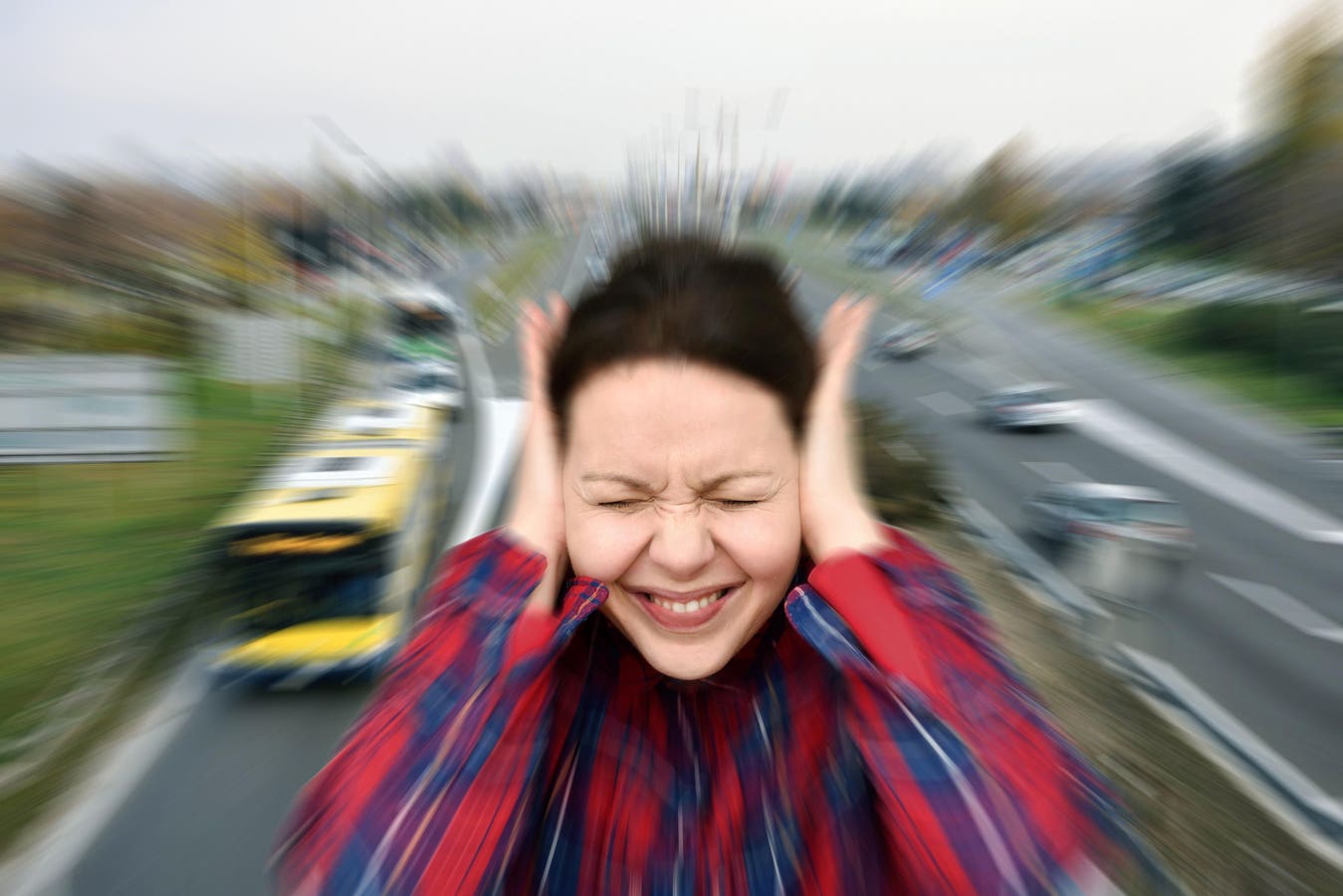People on bicycles cross a busy street to and from the Vondelpark in Amsterdam.
getty
An Edinburgh musician and composer is crowdfunding to produce a video to accompany a song he has written about the cycling nirvana that is Amsterdam.
“My song is about how Amsterdam became so great for cycling, and asks why we couldn’t have that infrastructure too,” says Dan Abrahams.
The fundraising is to hire a director, cinematographer, and animator to produce the video.
Edinburgh cycling advocacy group Spokes will match all donations up to $1,346.
Previously, Abrahams has written a piece for the Scottish Chamber Orchestra which featured a home-made percussion instrument made from bicycle wheels, and he has also produced an earlier video calling for safer streets in his adopted city.
“My song is a reminder that we could be more like Amsterdam,” says Abrahams.
“People say that cycling is only so popular in the Netherlands because it’s flat, doesn’t rain, and because they’ve been cycling forever. But the reason the Netherlands has such great cycling infrastructure is because they protested for it, and lobbied politicians to make it happen.”
This protest was a 1970s campaign against “child murder,” which helped transform Dutch streets, making them safer for pedestrians and cyclists.
“Stop the child murder,” argues this 1972 headline in the Dutch De Tijd newspaper.
Archive
In 1971, motorists in the Netherlands killed 3,000 people, 450 of whom were children. One of these was Simone Langenhoff, the six-year-old daughter of Eindhoven-based journalist Vic Langenhoff, a senior writer on national daily newspaper De Tijd.
In anguish, he wrote a 1972 front-page article headlined, “Stop de Kindermoord” – “Stop the Murder of Children.”
Langenhoff wrote: “[The Netherlands] chooses one kilometer of motorway over 100 kilometers of safe cycle paths … There’s no pressure group? Let’s start one. Parents of little victims, worried parents of potential little victims should unite!”
In the polemic, he urged that children be taken to school by bus rather than walk or cycle. His article hit a nerve, and urban activists were inspired to create the Stop de Kindermoord campaign organization.
Amsterdam bicycles; bicyclists on Rozegracht, 27 May 1978. (Photo by: Sepia Times/Universal Images Group via Getty Images)
Sepia Times/Universal Images Group via Getty Images
Led by Maartje van Putten, a 23-year-old new mother, the body advocated not for school buses but protection from motorists. This poignant campaign–along with the others that had preceded it–persuaded the authorities, drip by drip, to extend and improve the already extensive cycling infrastructure that had been installed in some parts of the Netherlands since the 1930s.
Stop de Kindermoord organized demonstrations across the nation, usually with many children in tow. Crucially, it offered practical solutions. The protest group recruited traffic engineer Steven Schepel as technical advisor. He drew up child-friendly street designs specific to whichever local authority or municipality asked for them.
In 1989, Stop de Kindermoord changed its provocative name to Kinderen Voorrang, meaning “Priority for Children.” In 2001, it was subsumed by the road safety campaign, Veilig Verkeer Nederland–“Safe Traffic Netherlands”–which continues to campaign for road safety.
Maartje van Putten later became a Member of the European Parliament.
Cycling nation
The protests of the 1970s did not create the cycling infrastructure in the Netherlands. The Netherlands has been the world’s leading cycling nation since about 1912. The first cycleway in the country was converted from a sidewalk in 1885 on the Maliebaan, a long, straight road in Utrecht. This gravel cycle path was created for high-wheel riders by 44 members of the Algemene Nederlandse Wielrijders Bond (Royal Dutch Touring Club), ANWB for short, and founded two years previously. (The ANWB is now a motoring organization, the Dutch equivalent to the AAA, but also still advises on bicycling matters.) Originally a members-only racing track, it was opened for all cyclists in 1887, and was later extended to become a regular cycleway; it’s still used for this purpose today.
Bicyclists in Amsterdam, early 1900s. (Photo by George Rinhart/Corbis via Getty Images)
Corbis via Getty Images
The separation of transport modes—alien everywhere else at the same time—quickly became standard in the Netherlands. In 1898, London’s Spectator magazine reported: “On the route from the Hague to Scheveningen there lie parallel to each other a carriage road, a canal, a bicycle track, a light railway, side-paths regularly constructed.”
Writing in 1924, a Christian Science Monitor correspondent pointed out: “Everyone in Holland cycles and everyone can cycle everywhere” because “there is a wonderful system of roads and pathways for the cyclist.”
In 1933, Karel Čapek (the Czech writer who introduced the word robot to the world) was impressed not only by the numbers of Dutch cyclists but also how they moved: “I have seen various things in my time, but never have I seen so many bicycles as, for instance, in Amsterdam; they are no mere bicycles, but a sort of collective entity; shoals, droves, colonies of bicycles, which rather suggest teeming of bacteria or the swarming of infusoria or the eddying of flies.”
An American travel journalist writing in 1934 wondered: “If there really is anything in all this talk about evolution, another century will see the Dutch children coming into this world on tiny bicycles.”
By 1938, the Netherlands had a 1,170-mile main-road network, 866 miles of which had adjoining cycleways. By contrast, in the same year, the U.K. had about 400 miles of Dutch-style cycle tracks.
From the mid-1970s, more investment was made in cycling infrastructure across much of the Netherlands, with federal policies put in place that entitled municipalities to receive payment for 80% of the costs of new cycling infrastructure.
Bicycles in the Central Station square of Amsterdam
getty
At the time, the Netherlands National Tourist Office in New York encouraged Americans to visit the country on bikes. The organization produced “Holland-Cycle Land” and other pamphlets extolling the virtues of cycling in the Netherlands. Cycling author Rob Van Der Plas—a naturalized American born and raised in the Netherlands—visited in 1974, and particularly liked the cycling infrastructure centered on Assen which had “bikeway systems [that] are really bicycle freeways: They have well-designed crossings with other roads, often form the most direct link between towns and villages, are well surfaced. They are used [for] transportation . . . because they do not delay the cyclist.”
New Yorker writer H. P. Koenig went on a cycle holiday two years later and came back with glowing reports of a country where “bicycling is still a way of life . . .” and where “paved bicycle lanes run alongside main roads.” Many of these paths, said Koenig, had been “built 60 years ago,” including a “surge of building” in the 1930s.
“A master plan for 250 miles of paved paths [near Assen, in the province of Drenthe] was devised in the mid-’50s, most of which has been completed.”
Koenig added that, in Assen, he “enjoyed the kind of bicycle riding that doesn’t exist anywhere else in the same satisfactory way.”
In the 1980s and 1990s, more cycling infrastructure was built, with Dutch road engineers now working to a five-point formula:
Coherence: cycling infrastructure should provide good connectivity between all origins and destinations in the area.
Directness: road authorities should minimize detours and delays for cyclists.
Safety: road authorities should minimize the number of conflicts between motor traffic and cycle traffic and minimize the outcome of remaining conflicts.
Comfort: cycling infrastructure should allow for comfortable maneuvering and minimize the use of (precious) human energy.
Attractiveness: as slower modes of movement are more sensitive for the quality of urban space, cycle routes should preferably use varied small-scale environments.
Safe
“Over the 18 years I’ve lived in Edinburgh I’ve seen cycling infrastructure improve very slowly,” said Abrahams, “but it’s not nearly enough to make people feel safe getting about the city.
“For the sake of the climate, air quality, people’s health, congestion, more pleasant streets and much more, we need to get away from having so many cars. That means better public transport and more cycling.”
“Why can’t we do it like Amsterdam,” asks Abrahams in his song. “I want to ride my bike like they do.”
Abraham’s video—which he hopes will encourage Edinburgh’s politicians to build more Dutch-style cycling infrastructure—will feature parts of Edinburgh being transformed by German artist Jan Kamensky, who produces animations with cars and car-centric infrastructure uprooting and levitating out of frame.









